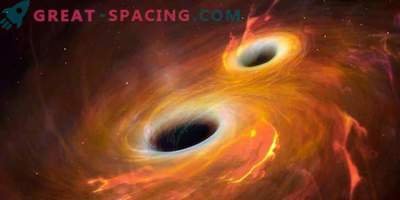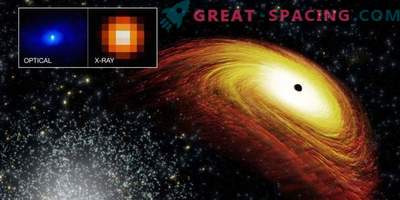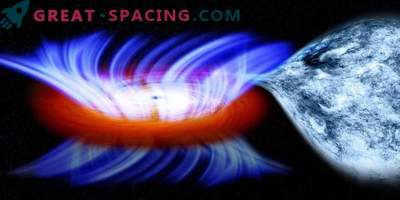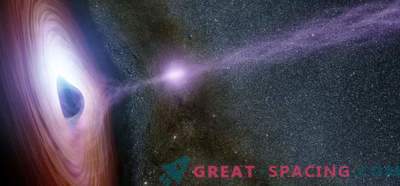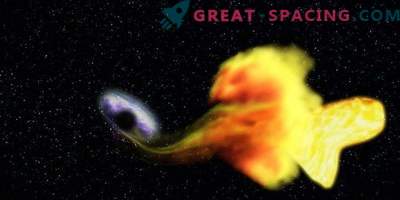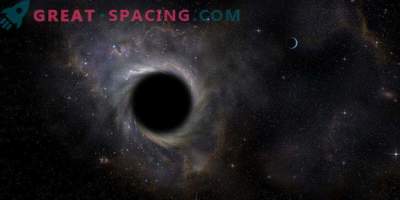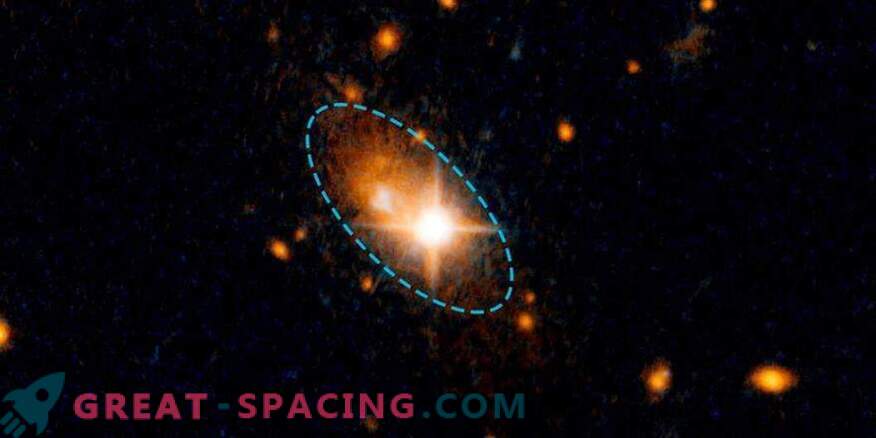
Scientists believe that the gravitational waves, which were first talked about by Albert Einstein, pushed the black hole out of the galactic center.
The substance in black holes is located so tightly that the light and other electromagnetic radiation cannot escape from the clutches of its gravitational fields. But the objects still leave noticeable marks on the surrounding gas, stars and galaxies.
The concrete hole is 8 billion light-years distant from us. According to preliminary calculations, for its displacement, it took at one moment to explode 100 million stars, with supernovae. This effect can be repeated when two small supermassive black holes collide. There is an opinion that this is exactly what created the waves.
The black hole discovered weighs more than a billion suns. This was the best confirmation of the possibility of merging supermassive black holes.
“It seemed like we were seeing something incredibly strange,” said Marco Ciaberg from the Space Telescope Institute (STScI) and Johns Hopkins University.
“Using the Hubble telescope, the Sloan digital survey and the Chandra X-ray observatory, we derived only one possible background history,” he added. “It turned out that we received much more X-ray, ultraviolet radiation and near-infrared light than any other black hole.” For the first time, gravitational waves were found only last year. This was done by the laser-interferometric gravitational-wave observatory (LIGO). She caught the characteristic vibration of two solar black holes merged into one big one. Albert Einstein mentioned these waves more than 100 years ago. They resemble ripples, like the one that forms when a heavy stone is thrown into the water.
After analyzing the data, it became clear that we face a quasar located far from the core of the galaxy. Quasars are unusually bright, distant objects that feed on black holes.
“It seemed to me that we would notice a multitude of uniting and unstable galaxies around the quasars. But it was surprising to come across a quasar that had been pushed aside from the nucleus. In addition, the galaxy was also properly formed, “- says Chiaberg.
It turned out that the black hole found was 35,000 light-years away from the center. It continues to brake at a speed of about 4.7 million miles per hour.
This speed would be enough to get from the Earth to the Moon in 3 minutes. If the situation does not change, the black hole will say goodbye to its galactic limits in 20 million years.
Chiaberg believes that the merging of two galaxies was a preparatory stage for the expulsion of the black hole. When the two galaxies merged, their black holes occupied the center of the newly recreated elliptical galaxy. This began to create ripples in space and time. Suspected black holes differed in size and speed of rotation. Because of this, spatial ripples gathered strength in a single chosen direction. When they collided, the gravitational waves disappeared, and the newly created giant rebounded in the other direction from the strongest waves.
“The mass and direction of rotation of black holes before the merger affect the change in the usual symmetry,” said Colin Norman, an astrophysicist at Johns Hopkins University. “Therefore, such objects are so rare.”
One day, future observatories will have enough power to detect gravitational waves from supermassive black hole fusions and other higher energy phenomena.


